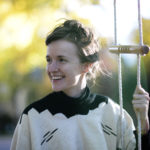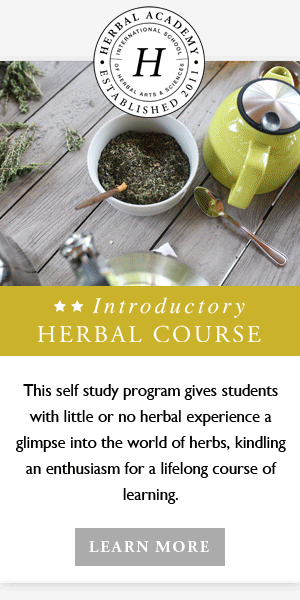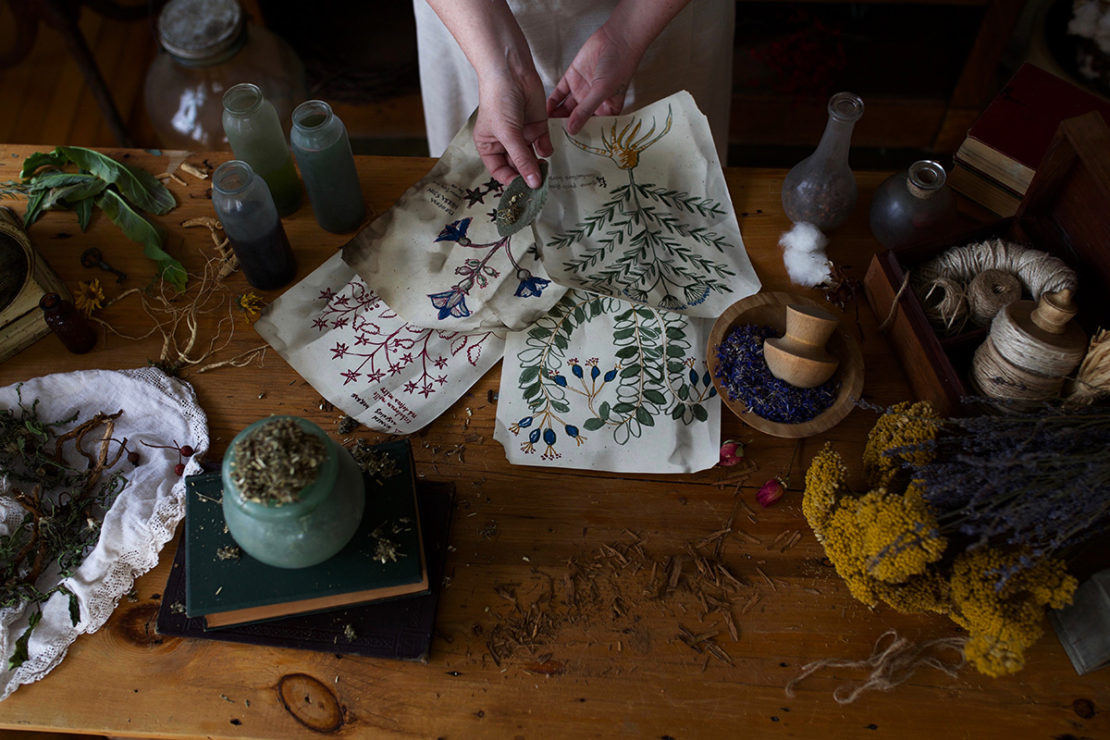
Herbalism: A History – How Herbalists Of The Past Paved The Way For Today
Have you ever wondered how modern-day herbalism came to be? Before the dawn of Instagram herbalism or online herbal education (like the Herbal Academy!), the roots of herbalism run quite deep. Tracing these roots all the way back to prehistory (the time before writing systems were developed), we find that different cultures around the world have been utilizing herbs for health support. In this article, we will trace the evolution and growth of herbalism from its earliest recorded beginnings all the way to its modern-day applications. You might be surprised how relevant the original notions of herbalism still are today. Read on to discover how herbalists of the past paved the way for today.
Herbalism: A History
The history of herbalism is a long path which winds all over the world. This makes it nearly impossible to map on one timeline all of the influential herbalists of the past who have paved the way! While it is certainly a challenge to encapsulate thousands of years of herbal history in one place, we wanted to provide a brief historical timeline that gives you a basic yet foundational outline of how modern herbalism came to be today.
“Embracing the historical and modern traditions of herbalism around the world is the first step in birthing your story and finding your niche in a rich and diverse industry.” — Herbal Academy’s Entrepreneur Herbal Course
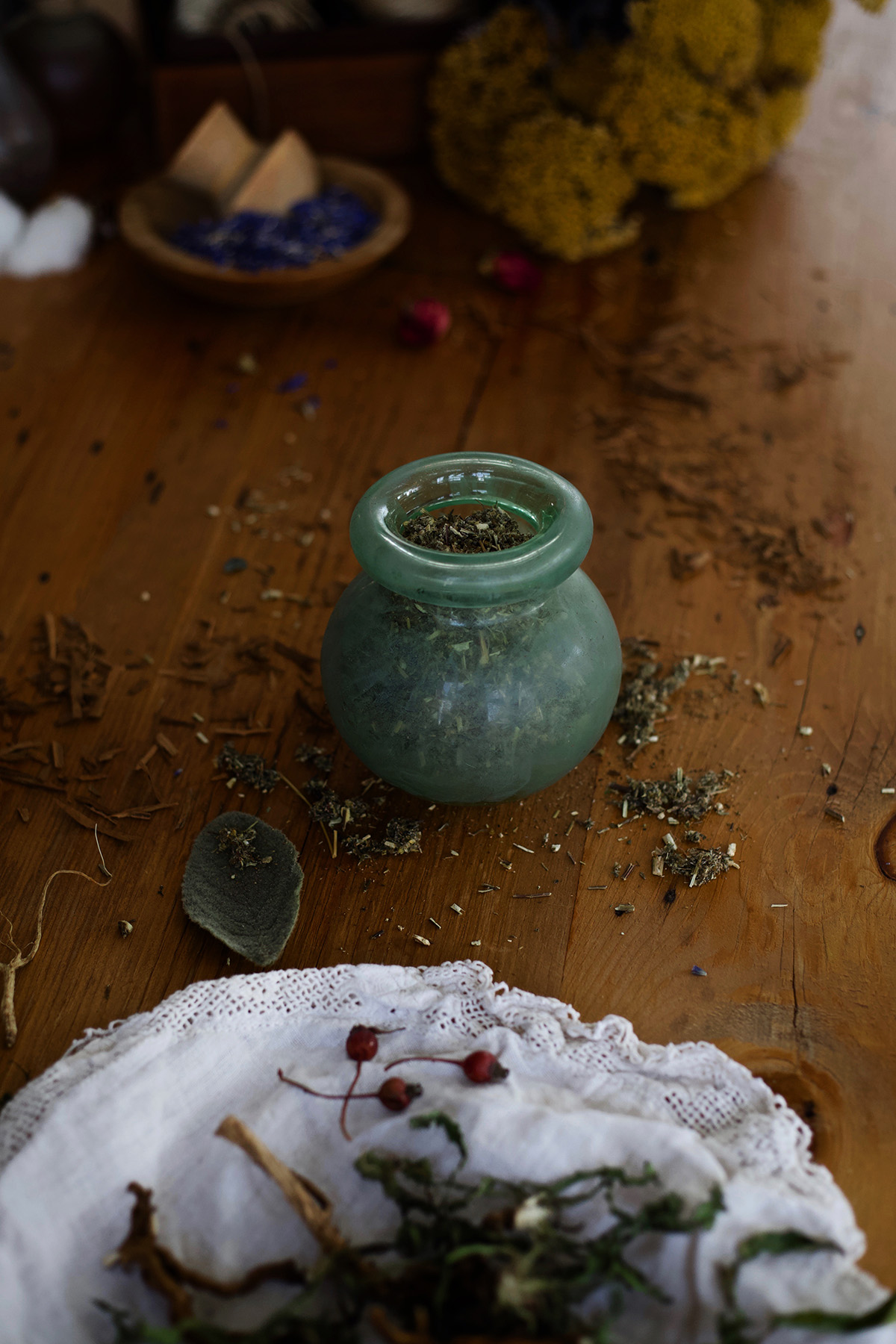
~60,000+ BCE: Paleolithic Herbalism
Yes, there is evidence that our paleolithic ancestors used native herbs in a deliberate way! A Neanderthal burial unearthed at Shanidar in northern Iraq revealed a man laid on soil covered with grape hyacinth (Muscari armeniacum), yarrow (Achillea millefolium), ephedra (Ephedra sp.), henbane (Hyoscyamus niger), St. Barnaby’s thistle (Centaurea solstitialis), marshmallow pollen (Althea officinalis), and other herbs which are still used in herbal practice and folk medicine today (Storl, 2012; Griggs, 1981; Solecki, 1975). Recent studies on neanderthal tooth plaque also suggest that Neanderthals ate or chewed on yarrow, chamomile, and poplar, (Hardy et al., 2012; Weyrich et al., 2017).
~30,000 BCE: Shamanism Practices First Recorded
Some of the earliest herbalists of the past were the shamans or medicine keepers of a tribe. Shamanism was even practiced in paleolithic times. Ancient cave art dated at 30,000 years old shows evidence of shamanic practices first being used (Villoldo, 2017). Thousands of years later, around 4000 BCE, the tradition of shamanism developed in Eurasia. Shamans, in general, are known to have a direct connection with spirit or the ability to communicate with gods or guides in order to heal their people or reveal insight on the world around them. Herbs and native plants were an integral part of their practice (Griggs, 1981).
~3000+ BCE: Sumerian Tablets + The Roots of Ayurveda and Traditional Chinese Medicine (TCM)
The first dated, written record of medicinal plants was etched on clay tablets by the Sumerians over 5000 years ago in ancient Mesopotamia (modern-day Iraq); around this time period in China, the roots of traditional Chinese medicine were beginning to be transcribed, and in India, Ayurveda was being practiced and shared orally (Storl, 2012).
~3000-1500 BCE: Medical Theories of Ancient Egypt
During this time period, the Ancient Egyptians wrote the Ebers Papyrus, a compilation of important and diverse medical texts written over the course of 1500 years that describes over 850 different herbs and their traditional uses along with treatises on areas of medicine including gynecology, psychiatry, and dentistry (New World Encyclopedia, 2011). Learn more about this compilation of herbs in our article on Herbal History.
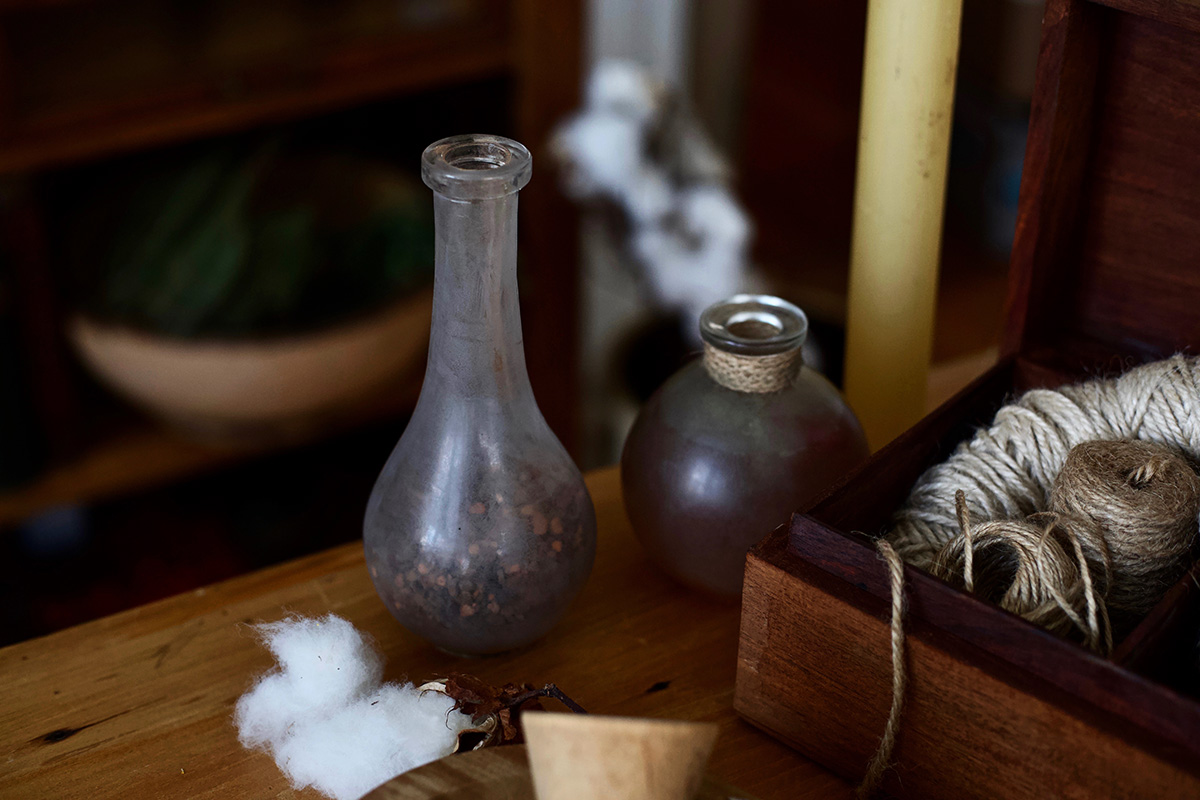
~2800 BCE: Shen Nung, The ‘Divine Husbandman’
Shen (Chi’en) Nung is referred to as “the father of Chinese medicine” and is believed to have introduced acupuncture as a healing therapy. Although much remains unknown (including when Shen lived and died), he is assumed to have greatly influenced the pen ts’ao ching (also known as the Divine Husbandman’s Materia Medica). This text is the earliest existing Chinese pharmacopoeia and includes 365 different remedies (U.S. National Library of Medicine, 2001).
In Chinese medicine, Shen Nung is largely regarded as a mythical figure that represents a class of people who conceptualized the philosophical foundation of TCM. The Divine Husbandman’s Materia Medica is thought to have been orally collected from this class of people and transcribed later on, and not written by a single person, Shen Nung (Unschuld, 1986).
~1200 – 1000 BCE: Atharvaveda
Around this time, Ayurvedic herbal knowledge and formulas were transcribed for the first time in the Atharvaveda. This text is considered part of the fourth Veda, a large series of ancient scriptures from India (Storl, 2012).
~500 BCE: Witchcraft Condemned
Although practices labeled as witchcraft began before this date, the Old Testament of the Bible first introduced the idea of witchcraft to the world in writing around 500 BCE.
Although witches are famed for being ugly women who work with the devil and cast evil spells (as many cartoons paint them out to be), many true witches were actually noted for their beauty and the effectiveness of their potions. They would use creative and peculiar common names for plants such as “bloody fingers” for foxglove (Digitalis purpurea) and swine snout for dandelion (Taraxacum officinale). There are many legends, myths, and stories surrounding the work of witches, whose work has contributed to the application of herbalism today (Buckland, 1995). Witches utilize elements of magic, alchemy, and herbal medicine for specific intentions. There are still many practicing witches today who integrate herbalism and lore into their modern practices.
~450 BCE: Empedocles + The Four Roots
Empedocles, a Greek philosopher, developed the theory of “The Four Roots” which became the medical dogma for the next 2,000 years. Plato, a later Greek philosopher, further developed these roots into “The Four Elements” and as we will see, Hippocrates, a Greek physician, developed them into “The Four Humors” around 400 BCE. In a nutshell, these ideas introduced the idea that human constitution is based on various combinations of elements (Soccio, 2015).
These perspectives by Empedocles, Plato, and Hippocrates all paved the way for Unani-Tibb medical system, developed by the famous Persian physician Hakim Ibn Sina around 1000 CE. The four humors and the Unani-Tibb tradition continue to be practiced today, and have influenced modern Western herbalism.
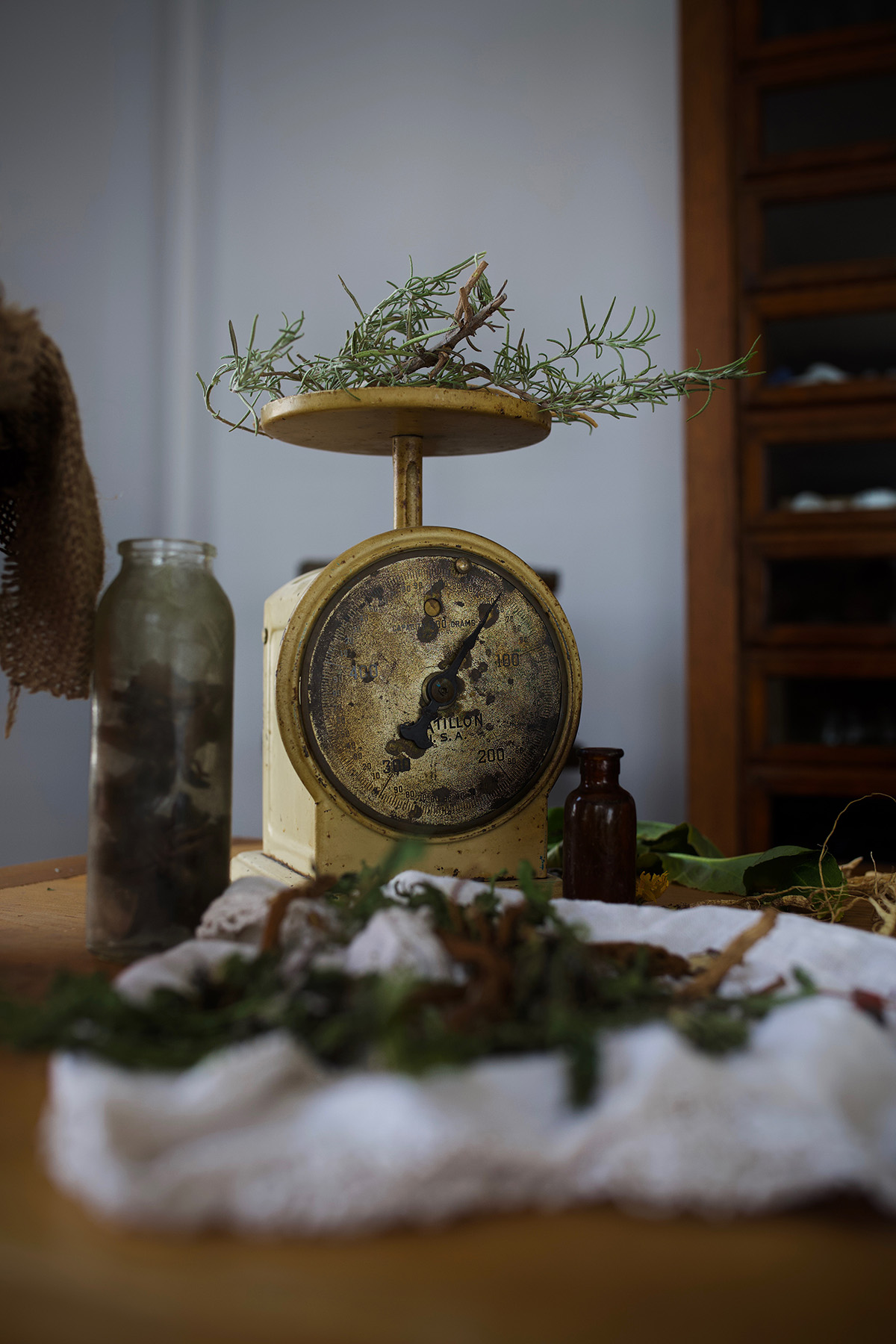
~400 BCE: Hippocrates + The Four Humors System
Hippocrates developed the foundational Four Humors System and is considered the “father” of medicine by many texts and peoples. Compared to other orthodox physicians of his time who were rather allopathic in their methods and believed that disease came from the gods, Hippocrates viewed the body as an integrated whole, dictated by the laws of nature.
Although at first glance you may not connect Hippocrates directly to the path of herbalism, his methods and perspective remain the core foundation of the way many clinical herbalists practice today. Some of the key foundational practices he developed include intaking client case histories, charting the course of treatment of his clients, and carefully observing physical, mental, and emotional states and the environmental influences which dictate them (Griggs, 1981).
“Where earlier generations regarded the whims and punishments of the gods as the source of all matter and the cause for illness and disease, Hippocrates argued that diseases should not be attributed to the wrath of the gods but seen as arising from imbalances in internal factors. The Hippocratic Corpus is the first medical text free of all religious or supernatural influence, and dependent entirely on rationalism and natural explanations for disease (Longrigg, 1997).” — Herbal Academy’s Entrepreneur Herbal Course
~200 BCE – 100 CE: Huang Di Nei Jing
During this time period, one of the most famous texts on Chinese Medicine was compiled: the Huang Di Nei Jing (Yellow Emperor’s Inner Classic). This text carries both the theoretical and philosophical foundation of Chinese Medicine even though only twelve herbal formulas are listed in the entire text (J. Baker, personal communication, 2016; U.S. National Library of Medicine, 2001).
~40-90 CE: Pedanius Dioscorides
Pedanius Dioscorides was a Greek physician and herbalist who created an extensive list of herbs and their medicinal uses. The oldest known manuscript of his work is the Juliana Anicia Codex from 512. Dioscorides’ work remained solely written in Greek Byzantine for years until it was translated into Arabic in the 9th century. It then traveled to Spain and was translated into Latin as the famous herbal De Materia Medica. This text became one of the main authoritative references on medicinal plants for the next 1,500 years (Griggs, 1981; University of Virginia, n.d.; World Digital Library, n.d.).
~200 CE: Galen
After Rome conquered Greece in 146 BC, many of the classical Greek sciences and medicinal practices (including the works of Hippocrates) fell off the map. Roman medicine was largely magic- and deity-based until Galen came along and established the science of anatomy. Galen further developed the Four Humors System that Hippocrates had created by adding the ideas of Physis and Pneuma. These ideas encompass the life force, spirit, and breath that is infused in all living beings. His notions became so popular that the perspective of Galenism was born and gave rise to the “Galenicals” who followed him (Griggs, 1981).
~200-1100 CE: “Dark Ages”
Following Galen’s work was a period known as the “dark ages” where the Holy Roman Empire banned the reading of older Greek and Roman medical texts. During this period, the old knowledge was kept alive by Arabic and Jewish scholars who translated the Greek texts into their languages.

~1000 CE: Hakim Ibn Sina (Avicenna)
Hakim Ibn Sina is quoted as the “most famous physician in human history,” largely as credit to his monumental medical text: The Canon of Medicine. This text summarizes medical thought and practice of the Egyptians, Greeks, and Romans up to Ibn Sina’s era and his work contributed to the formation of Unani-Tibb (also known as Unani Medicine or Tibb). His works are still used today in Unani Tibb medical schools around the world.
Avicenna was considered a mystic and he combined his spiritual thought with philosophy and the natural sciences. In his assessments, he considered all aspects of a person’s life in order to diagnose them of a “disease.” From his perspective, developing a “regimen” balancing activity, rest, food, water, and air is the foundation of bodily health (Griggs, 1981).
1098-1179 CE: Hildegard von Bingen
Hildegard von Bingen was a German saint who wrote the herbal texts Cause and Cure and Physica. Hildegard was more than just an herbalist of the past, she was also a composer, scientist, scholar, visionary, and a mystic. She truly paved the way for today through weaving the spiritual realm into her work and fostering scientific study of natural history in Germany. Learn more about Hildegard von Bingen in our post here.
~1140-1200 CE: Moses Maimonides
Maimonides was a world-famous Jewish physician and philosopher who migrated to Egypt and became the royal physician to the Arabic regent. He wrote numerous medical and philosophical texts, including his commentary and expansion on the work of Hippocrates, Galen, and Avicenna. One of his most famous texts was the Regimen of Health where he suggested that a physician should not treat a particular disease, but instead the sick person as a unique individual (Rudavsky, 2010).
1400-1600s CE: The Herbalism Boom
During this time period herbal medicine was becoming more widespread than ever in the published and academic world given the increasing amount of books and literature available. In 1526, Grete Herball became the first herbal book written in English. Although it was printed by Peter Treveris, much of the book is borrowed from earlier herbals, including De Materia Medica, so there is no single accredited author.
Although herbalism as we know it today was starting to boom in the published world, these texts were only accessible to the minority of people who could read then. At that time “herbalism” was simply common medicine and was not so divided from standard medical systems.
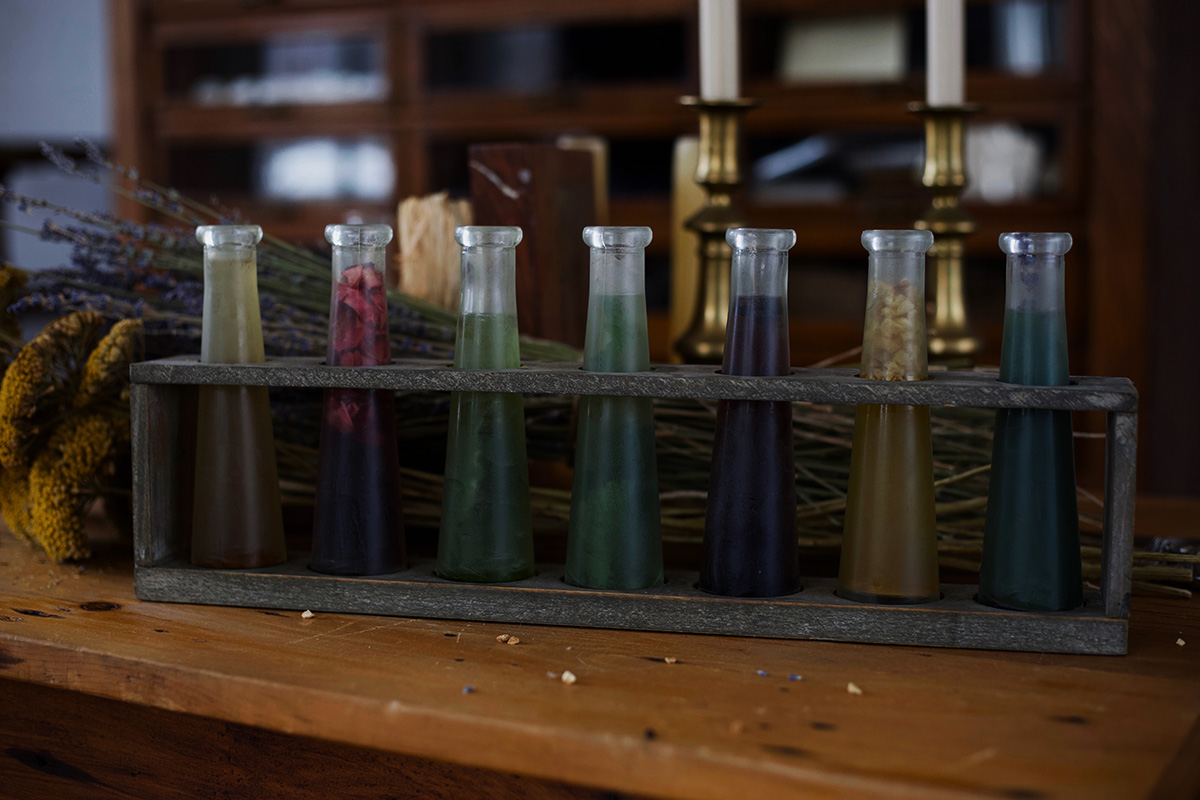
1400s CE: Apuleius Platonicus
Platonicus wrote a popular text, Herbarium, which, like other herbals of that time, was originally published only in Latin. There was such a wild demand by the public, hungry for information on native medicinal plants and how to use them, that publishers started publishing herbals in different languages (Griggs, 1981).
1493-1541 CE: Paracelsus + The Roots of Alchemy
Paracelsus was the main contributor to the start of the alchemical movement of medicine (Wood, 2008). He expanded on the notions of physics to incorporate the connection between physical and spiritual matter in medicine. His foundational approach is still applied today in modern science.
“As a philosopher and a committed Catholic, he integrated the spiritual and the elemental with the chemical and esoteric, both extending and challenging old ideas in “meterological writings” that included Biblical teachings, Hippocratic and Galenic philosophies, and contemporary understandings of chemistry in a unique vitalist matter theory… Paracelsus also believed in the influence of the firmament on all tangible and elemental objects. The planets and stars, he argued, play important parts in the natural world and in the human bodies as macrocosm to the microcosm.” — Herbal Academy’s Advanced Herbal Course
1545-1612 CE: John Gerard and Rembert Dodoens
Englishman John Gerard was the first noted herbalist to include New World (North American) plants in a European herbal. His impactful text Herball (also known as Generall Historie of Plants) was published in 1597. Although he is cited as the author since he contributed the North American plant additions, the text is largely an English translation of another popular herbal that the Dutch scholar Rembert Dodoens wrote in 1554 (University of Virginia, n.d.).
1616-1654 CE: Nicholas Culpeper
Nicholas Culpeper was an herbalist of the past who truly paved the way for today. One of his most monumental works, Culpeper’s Herbal, is still frequently referenced by herbalists, astrologers, and physicians alike. Culpeper’s approach and writings were unique and impactful (especially during this era), presenting information on astrological medicine, herbalism, and pharmaceuticals together.
1692-1693 CE: Salem Witch Trials
Although many different witch trials occurred before this time, the Salem Witch Trials in the New World (North America) are some of the most well-known. Witchcraft, understood as a form of religion, was believed to threaten the status quo as well as the predominant religious faith and accepted perspectives in society. Therefore, ending witchcraft altogether, including its herbal applications, became a priority of the time (Buckland, 1995). The fact that mostly female witches were hung and that the architect of the trials received guidance for developing the first smallpox vaccine from his slave who practiced animist faith suggests that the Salem “Witch” Trials might not have been about witches, but rather women instead (Rae, 2018).
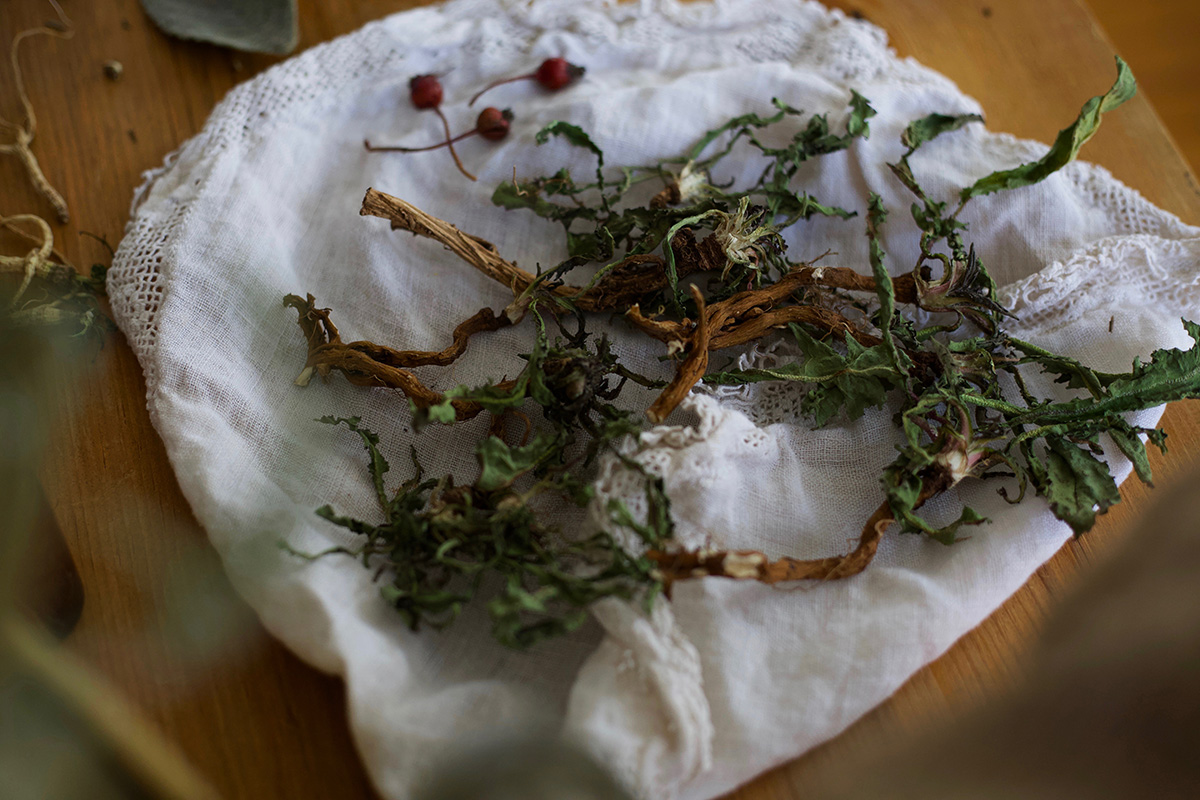
1700s CE: Herbalism Thriving
During this time period, herbalism was the predominant source for medical knowledge and the herbal literature of the time were consulted arguably moreso than general physicians were. Folk knowledge, herbal books, and common plants were a more accessible and affordable healthcare option for the common folk who were knowledgeable of and used herbs out of necessity.
1800s CE: Eclectic Physicians + Thomsonian Medicine
The Eclectics were a group a physicians who integrated many different modalities with herbalism, largely in response to the more barbaric methods (e.g., bloodletting and mercury) that current physicians were using in order to address different diseases and conditions. Among many contributions the Eclectics made to modern herbalism, one of the most impactful was their development of a materia medica built around American medicinal plants (Berman & Flannery, 2001). The Eclectics’ contributions to pharmacy, medicine, and materia medica after 1850 profoundly influenced the evolution of phytomedicine in Germany and many modern-day herb schools have founded and developed their curriculum from the work of the Eclectics.
Also occurring in the early 1800s was the dawn of “Thomsonian Medicine.” Samuel Thomson was an herbalist and botanist of this era whose popularity created such a strong influence over other doctors and herbalists around him that they began calling themselves “Thomsonians” instead of their generally respected titles. Some practitioners still refer to Samuel Thomson as “the father of American herbalism” (Haller Jr., 2000).
“The Thomsonians treated all disease in the same manner. The basic objective was to “balance inward and outward heat.” This was accomplished with a “course” of medicines, which included the use of steam baths, followed by large doses of Lobelia (Lobelia inflata), heat stimulants such as cayenne, astringents herbs, bitters to restore digestion, and other herbs as needed, including nerve sedatives, anodynes, and enemas. Seventy different herbs were generally used by the Thomsonians, forty-two of which were indigenous forest medicinal plants (Berman, 1954).” — Herbal Academy’s Advanced Herbal Course
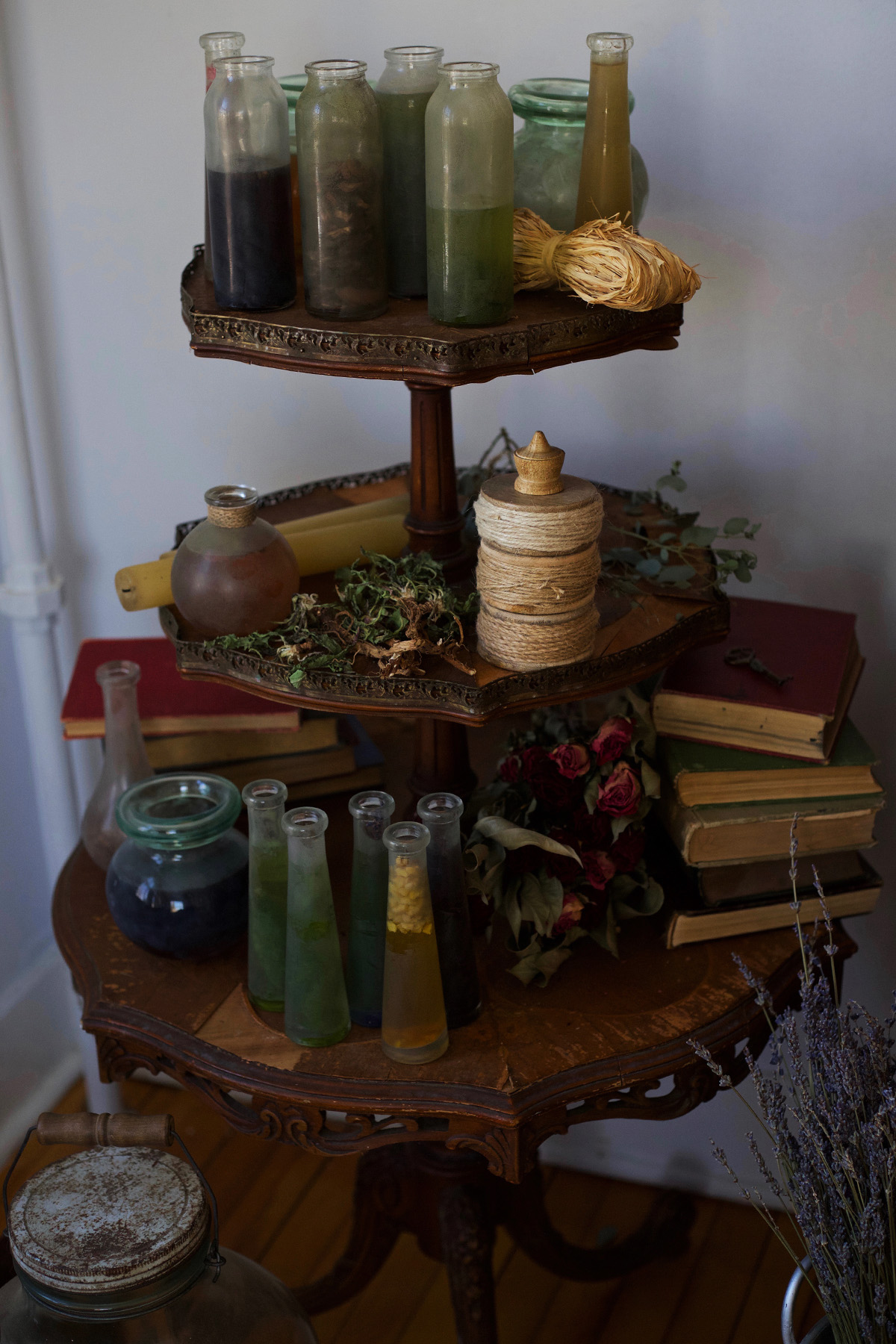
1904 CE: Council on Medical Education (CME) Formed
The CME was formed in 1904 by the American Medical Association (AMA) to upgrade and standardize medical education. Through subjective evaluation of of Eclectic, Thomsonian, and Homeopathic students and colleges (Coulter, 1973), exclusion of these types of “irregular” practitioners as M.D.s (regardless of whether they had a medical degree or not) (Davis, 1851), and diminishing the required study of American materia medica to only 10% of the curriculum, herbal and other medical traditions became discredited. In turn, this ultimately forced Eclectic and Homeopathic colleges to shut down completely, including women’s and African-American colleges (Southwest School of Botanical Medicine, n.d.).
1910 – 1935 CE: Herbal Education Collapse
Due to the work of the AMA, medical level herbal education in North America collapsed. During this time period, more than half of all American medical schools merged with large universities or shut down altogether. Eclectic, physiomedicalist, women’s, and African-American colleges were all forced to close and only the minority of schools that were teaching “orthodox medicine” were able to remain open.
~1950s – 2000 CE: Scientific Shift
During the second half of the 20th century, there was a noticeable shift in herbalism from more traditional practices to science-based ones. There was a concerted effort made by herbalists to “prove that herbs could work” and a common trend of being a “defensive herbalist” (Bergner, 2009).
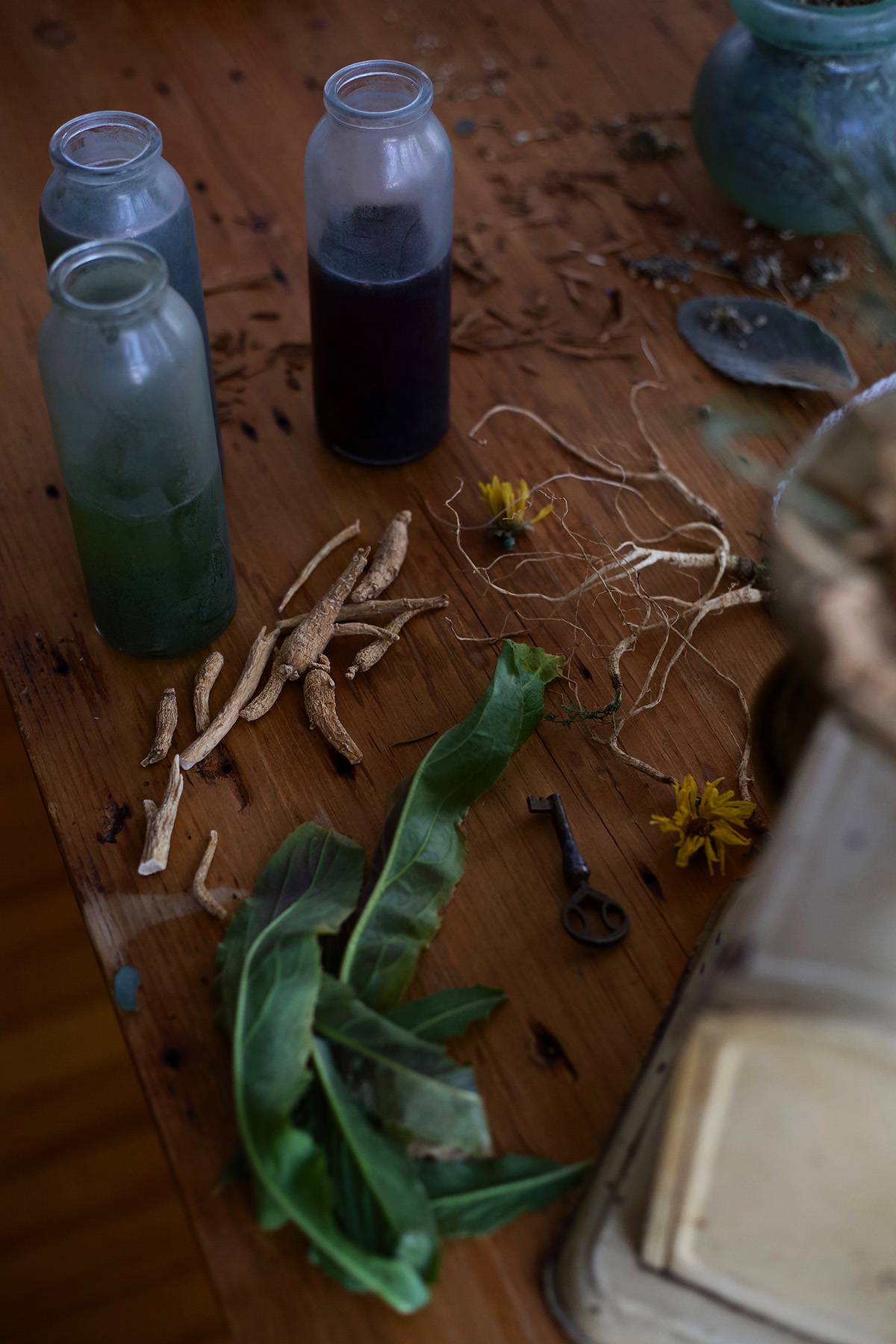
~1960s-70s CE: Herbalism Revival
As the counterculture began to rise, so did the revival of folk herbalism in resistance to institutionalized ways of medicine. This time period was also known as the “back to the land” movement and has been referred to as the “contemporary American herbal renaissance” (Dougherty, 2005). During this movement, people began to reassert their independence from society and biomedicine in favor of herbalism and folk remedies.
1989 CE: American Herbalists Guild Founded
The American Herbalists Guild (AHG) is a non-profit educational organization that represents the goals and voices of herbalists specializing in the use of medicinal plants. Their mission is both to promote clinical herbalism as “a viable profession rooted in ethics, competency, diversity, and freedom of practice,” and to support the access to herbal medicine for all (American Herbalists Guild, n.d.).
1994 CE: United Plant Savers Founded
Herbalist Rosemary Gladstar founded the United Plant Savers (UpS) in 1994 in response to changing environmental issues and increasing market demands in the growing herbal industry. The UpS is a nonprofit organization with the mission “to protect native medicinal plants of the United States and Canada and their native habitat while ensuring an abundant renewable supply of medicinal plants for generations to come” (United Plant Savers, 2011). The “At-Risk” and “On-Watch” plant lists you may have referenced on your botany and wildcrafting trips were created and are maintained by the UpS!
2011 CE: Herbal Academy Founded
Herbalist Marlene Adelmann founded the Herbal Academy, which was one of the very first herbalism organizations to offer a robust online herbal school engaging with students in a beautiful multi-media learning platform. Through the Herbal Academy’s many generous contributions online, the school helped build awareness for herbalism in mainstream media especially through their social media presence. The Herbal Academy quickly became a global leader in herbalism education offering dozens of herbalism courses from foundational herbalism certificate programs and career-oriented herbalist training pathways to in-depth topical short courses and herbal intensive offerings, along with The Herbarium, a virtual membership space to learn all about the wild and wonderful world of herbs!

2018 CE: Herbalism Today
The global herbal industry is booming more than ever and herbalism as a whole is flourishing in new ways every day. In 2016, the global herbal medicine market was valued at USD 71.9 billion dollars and is expected to only continue growing over the next eight years (according to one trend analysis) (Cooper, 2017). Today, we not only have numerous brick and mortar schools teaching herbalism but several online platforms as well which can be accessed anywhere around the world (including the Herbal Academy!).
Herbalists have strong followings on social media and online blogs, and clinical herbalists offer their consulting services virtually. Despite the advent of the digital-age of herbalism, there are still countless physical classes, conferences, and herbal gatherings being organized around the world. The worldwide herbal community is growing stronger every day.
“Today, alternative medicine has become integrative health. Pushed by public interest in natural healthcare prevention and treatment options, major medical and pharmacy schools through the United States and elsewhere have course offerings in integrative health options. Scientific interest in herbs has exploded worldwide, leading to an exponential growth in published research, increasing our understanding of the benefits of herbal medicine. Herbs are integrated into allopathic medicine (mostly in the form of isolated, often synthesized components of prescription drugs), Traditional Chinese Medicine (often prescribed by acupuncturists), naturopaths, who embrace herbal treatment, and chiropractors, who often offer herbal dietary supplements.” — Herbal Academy’s Advanced Herbal Course
How The Past Paved The Way For Today
Herbalists of the past paved the way for today by experimenting with plants, using their intuition, recording their findings, and continuing to spread the herbal word by teaching and sharing their experiences. Each generation of herbalists expanded and built off of those before them, creating a history that is intricate, woven, and thousands of years strong.
The evolutionary path of herbalism arguably stretches back to the time when archaic humans and neanderthals walked the Earth. Despite the passage of time, there are still many strong threads between ancient herbal practices and those that are practiced today. Shamans throughout different indigenous cultures around the world still heal their people using native herbs. Alchemical herbal preparations are still being practiced, used, and taught through the form of spagyrics, a modern application of old alchemical working methods (Junius, 2007). Schools teaching the ancient practices of Ayurveda and Traditional Chinese Medicine are now located all over the world.
Herbalism schools and clinical herbalists are still referencing and drawing from ancient texts for formulation advice and perspectives on working with various diseases through the elements of nature. There is not only a reverence for the herbalists of the past but a modern-day application of their work. By studying herbalism and walking the path of an herbalist (in whatever way that manifests for you), know that you are actively preserving the roots of an ancient tradition while paving the way for herbalists of tomorrow.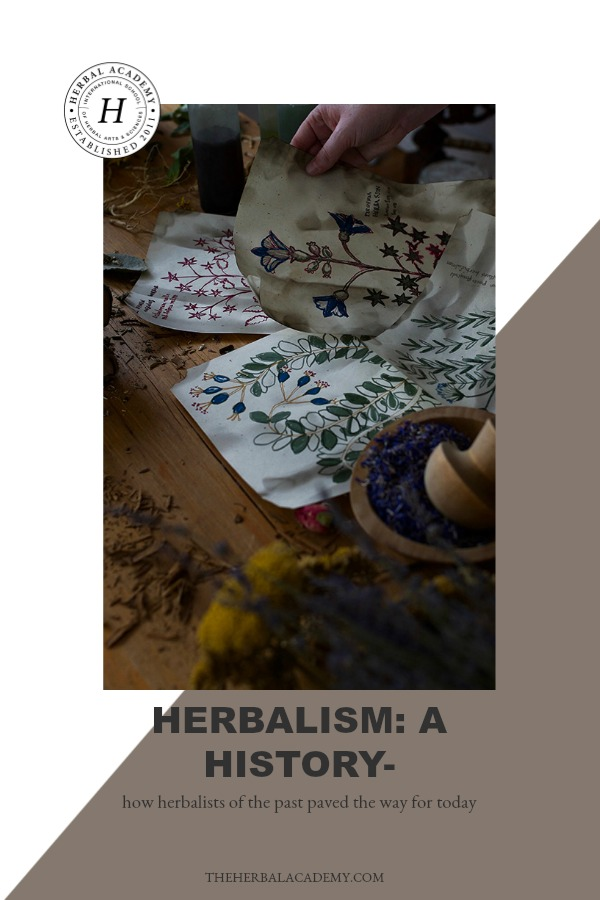
REFERENCES:
American Herbalists Guild. (n.d.). American Herbalists Guild mission. [Website]. Retrieved from https://www.americanherbalistsguild.com/mission.
Bergner, P. (2009). How to become a master herbalist in thirty years or more. [Online Article]. Retrieved from https://theherbarium.wordpress.com/2009/09/22/how-to-become-a-master-herbalist-in-thirty-years-or-more/.
Berman, A. (1954). The impact of the nineteenth-century botanical-medical movement on American pharmacy and medicine. Unpublished doctoral dissertation, University of Wisconsin, Madison.
Berman, A. & Flannery, M. (2001). America’s botanico-medical movements: Vox populi. Binghamton, NY: Pharmaceutical Products Press.
Buckland, R. (1995). Witchcraft from the inside: Origins of the fastest growing religious movement in America. St. Paul, MN: Llewellyn Worldwide.
Cooper, S. (2017). Herbal medicine market size and forecast, by product (tablets & capsules, powders, extracts), by indication (digestive disorders, respiratory disorders, blood disorders), and trend analysis, 2014-2024. [Report]. Retrieved from https://www.hexaresearch.com/research-report/global-herbal-medicine-market.
Coulter, H. L. (1973). Divided legacy: A history of schism in medical thought, Vol. III: Science and Ethics in American Medicine, 1800–1914. Washington, D.C.: McGrath Publishing Company.
Davis, N.S. (1851). History of medical education and institutions of the United States from the first settlement of the British Colonies to the year 1850. Chicago, IL: S.C. Griggs & Company, Publishers.
Dougherty, A.K. (2005). Herbal voices: American herbalism through the words of American herbalists. Binghamton, NY: The Haworth Integrative Healing Press.
Griggs, B. (1981). Green pharmacy: The history and evolution of western herbal medicine. Rochester, VT: Healing Arts Press.
Haller Jr., J.S. (2000). The people’s doctor: Samuel thompson and the American botanical movement 1790-1860. Carbondale, IL: Southern Illinois University Press.
Hardy, K., Buckley, S., Collins, M.J., Almudena, E., Brothwell, D. Copeland, L., …., Rosas, A. (2012). Neanderthal medics? Evidence for food, cooking, and medicinal plants entrapped in dental calculus. Naturwissenschaften, 99(8), 617-626. doi: 10.1007/s00114-012-0942-0.
Junius, M.M. (2007). Spagyrics: The alchemical preparation of medicinal essences, tinctures, and elixirs. Rochester, VT: Healing Arts Press.
Longrigg, J. (1997). Medicine in the classical world. In I. Loudon (Ed.), An illustrated history of Western medicine. Oxford: Oxford University Press.
New World Encyclopedia (2011). Ebers Papyrus. Retrieved from http://www.newworldencyclopedia.org/entry/Ebers_Papyrus.
Rae, N. (2018). The great stain: Witnessing American slavery. New York, NY: The Overlook Press.
Rudavsky, T. M. (2010). Maimonides. UK: John Wiley & Sons.
Soccio, D.J. (2015). Archetypes of wisdom: An introduction to philosophy. Boston, MA: Cengage Learning.
Solecki, R. (1975). Shanidar IV, a neanderthal flower burial in Northern Iraq. Science, 190(4217), 880-881. doi: 10.1126/science.190.4217.880.
Southwest School of Botanical Medicine. (n.d.). The national Eclectic medical association quarterly. [Online Article]. Retrieved from http://www.swsbm.com/Quarterlies/Quarterly.html.
Storl, W. (2012). The herbal lore of wise women and wortcunners. Berkeley, CA: North Atlantic Books.
University of Virginia (n.d.). Vienna dioscorides from de materia medica, 512. [Online Article]. Retrieved from http://exhibits.hsl.virginia.edu/herbs/vienna-disocorides/.
University of Virginia (n.d.). Herball, generall historie of plants by John Gerard, 1597. [Online Article]. Retrieved from http://exhibits.hsl.virginia.edu/herbs/herball/.
United Plant Savers. (2011). Our mission at UpS. [Website]. Retrieved from https://www.unitedplantsavers.org/about-ups.
Unschuld, P.U. (1986). Medicine in China: A history of pharmaceutics. Berkeley, CA: University of California Press.
U.S. National Library of Medicine. (2001). Classics of traditional Chinese medicine from the history of medicine division national library of medicine. [Online Article]. Retrieved from https://www.nlm.nih.gov/exhibition/chinesemedicine/emperors.html.
Villoldo, A. (2017). The origins of shamanism. [Blog Post]. Retrieved from https://thefourwinds.com/blog/shamanism/the-origins-of-shamanism/.
Weyrich, L.S., Duchene, S., Soubrier, J., Arriola, L., Llamas, B., Breen, J., …, Cooper, A. (2017). Neanderthal behaviour, diet, and disease inferred from ancient DNA in dental calculus. Nature, 544, 357-361. doi: 10.1038/nature21674.
Wood, M. (2008). The earthwise herbal: A complete guide to old world medicinal plants. Berkeley, CA: North Atlantic Books.
World Digital Library. (n.d.). “De materia medica” by dioscorides. [Online Article]. Retrieved from https://www.wdl.org/en/item/10632/.

